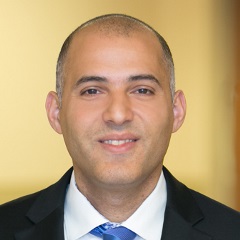Statins Play Important Role in Lowering Risk for Coronary Artery Disease
Patients who experience side effects from medication should know alternatives exist
 DAYTON, Ohio (December 10, 2018) – Simple lifestyle changes can play a significant role in lowering a person’s bad cholesterol, but many people may need to turn to medication when that doesn’t do the job.
DAYTON, Ohio (December 10, 2018) – Simple lifestyle changes can play a significant role in lowering a person’s bad cholesterol, but many people may need to turn to medication when that doesn’t do the job.
Statins are one of the most widely used cholesterol-lowering medications. According to the American Heart Association (AHA), statins are the only cholesterol-lowering drug class that has been directly associated with a reduction in the risk of heart attack or stroke.
Statins not only lower bad cholesterol levels but also increase good cholesterol levels in a person’s bloodstream. The secret to its success: Blocking the production of certain enzymes in the liver that are responsible for producing bad cholesterol.
“Patients are typically prescribed statins if they have had a heart attack or a stroke, if they have coronary artery disease or if they have certain comorbidities such as diabetes,” said Mouhamad Abdallah, MD, a cardiologist with Middletown Cardiology Associates. “This type of therapy is called secondary prevention. It’s where we are treating someone who has already experienced something like a stroke or heart attack and we’re trying to prevent them from experiencing another.”
Statins are also used for primary prevention, which is aimed at reducing the risk of a person experiencing an event – such as a heart attack or stroke – in the first place.
“This means people who are at-risk for coronary disease, heart attack or stroke,” said Dr. Abdallah, who practices with Premier Physician Network. “It also includes patients with high blood pressure, who smoke, or who have a family history of coronary artery disease.”
Statins have proven success at lowering bad cholesterol, but it also has side effects that can cause a person to stop taking the medication. Dr. Abdallah said it’s important for individuals to know that alternative treatments exist. While stopping the use of statins is not immediately harmful, not taking any measures to treat bad cholesterol levels can have long-term consequences.
It’s estimated that between one and five percent of patients who are prescribed statins will experience some type of side effect. Dr. Abdallah said the three main side effects include muscle aches and pains, elevated liver enzymes and uncontrollable sugar levels. Patients who experience these side effects shouldn’t be discouraged, but should talk to their physician about a new path of treatment.
“It’s important to know that every medication has potential side effects,” he said. “Medications are given with the intent of helping patients to live longer, but also to feel better.”
New treatment options are available to patients to try and, in some cases, a different type of statin is the right fit. There are up to six different types of statins, all of which can have a different effect on a patient.
Aside from medication, Dr. Abdallah said it’s important for patients with high cholesterol to carefully consider their lifestyle habits. A healthy diet and regular exercise can play a big role in creating the right balance between good and bad cholesterol.
Contact Us
Discover more about Premier Health and join us in building healthier communities in Southwest Ohio. Learn more about working at Premier Health, becoming a volunteer, and making a gift to support our mission.

